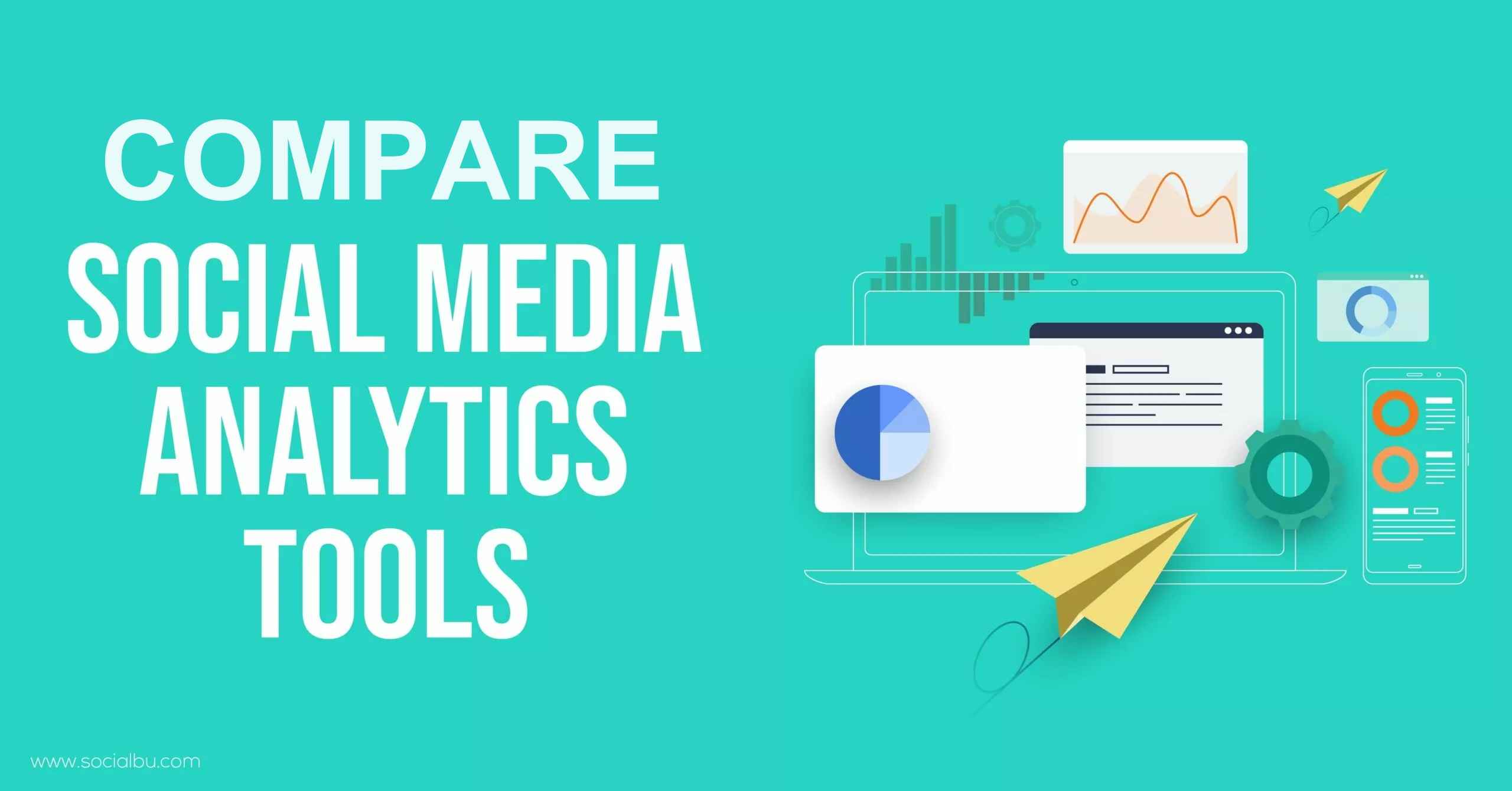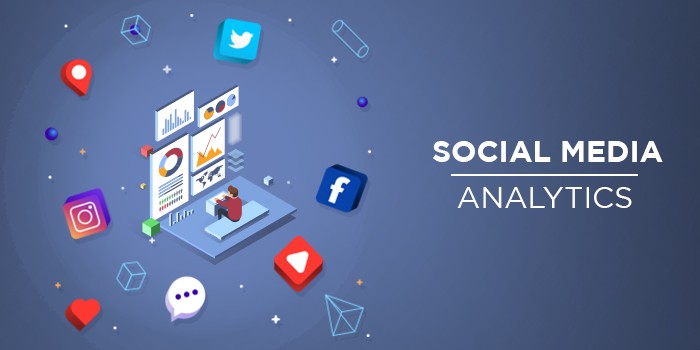Compare social media analytics tools to elevate your brand’s digital game. Sifting through data can be overwhelming, but choosing the right analytics tool could mean the difference between standing out or melting into the digital noise. Whether you aim to spearhead market trends or refine your existing strategies, getting to the heart of social metrics is key. Let’s dive deep into the various platforms that can help you make sense of the numbers. Unpack the pros and cons of giants like Hootsuite, Sprout Social, and Buffer to pinpoint which tools align with your brand’s unique pulse. Get ready to transform raw data into actionable insights that will drive your brand forwards.
Unveiling the Best Social Media Analytical Tools for Marketers
Evaluating Top Platforms: Hootsuite vs Sprout Social vs Buffer
As a pro who loves data, I know that picking the right tools makes all the difference. Marketers need the best social media analytical tools to stay ahead. When comparing Hootsuite, Sprout Social, and Buffer, each offers unique traits for social metrics tracking software. Hootsuite shines with integrated social listening capabilities. It lets you keep an eye on what folks say about your brand. Sprout Social stands out with its influencer analytics tools. It helps you find and connect with people who can elevate your brand reach. Buffer excels in fuss-free scheduling and has user-friendly Buffer analytics features.
But how do these platforms measure up for analytics for Facebook, Twitter, Instagram, and LinkedIn? Let’s dig in. Hootsuite provides a broad view, making Hootsuite vs Sprout Social analysis crucial. Sprout Social offers rich, detailed reports which are easy to understand. And Buffer, while more limited, gives solid insights for effective posting times and engagement rates.
Understanding Analytics Dashboards Across Channels
Dashboards are the command centers for your data. They pull info from different places into one spot. Understanding analytics dashboards is vital for cross-channel reporting tools. They show the health of your campaigns at a glance. This helps you track social media KPIs without having to jump between apps.
With custom reporting on social platforms, you can focus on the data that matters most. Such as hashtag performance evaluation or audience insights acquisition. This helps you craft more targeted content. Always aim to boost those social engagement metrics.
Facebook insights let you see how your content performs on the world’s largest social network. For Twitter, analytics tool features can hint at the best times to tweet and engage with your following. With Instagram analytics for growth, you can track which images or stories fire up your audience the most. And don’t forget LinkedIn analytics dashboards for B2B marketing insights.
On YouTube, it’s all about video performance metrics–which videos do your fans love? And for rising stars like TikTok, engagement statistics tools can show you if you’re catching on with younger crowds.
The best part? These social media data comparison tools, like Google Analytics for social media, give you the power to connect dots across platforms. You can see if your Twitter fans also watch your YouTube videos.
Powerful tools. Clear dashboards. Smarter decisions.
Find the right combinations and see your social media ROI soar. Use these insights to adjust tactics on the fly, and watch your brand grow. With the right tools, cross-channel reporting becomes less of a headache and more of a strategic asset.
So when you match up Hootsuite’s depth with Sprout Social’s clarity and Buffer’s simplicity, you gain a 360-degree view of your online presence. That’s how you turn data into action. It’s about understanding the moves to make, the content to post, and the people to reach. Choose wisely, and get ready to lead your brand to new heights.
Delving into Social Media Data Comparison for Multi-Platform Insight
Cross-Channel Reporting Tools and Their Impact on Strategy
Picking the best tools is key for understanding your brand’s success on social media. Good cross-channel reporting tools show how your strategies work across different platforms. They let you see which tactics win on Twitter, Facebook, or Instagram. I always aim to blend data from various sources with cross-channel reporting tools. This gives a complete picture of how a brand does online.
With these tools, I can tell which platform gets the most love for your brand. This helps me focus your efforts on what works best. We find out if your tweets fly high or if your Insta pics draw more eyes. Every platform tells a different story, and it is my job to read it.
Cross-channel tools shed light on how engaging your content really is. They measure likes, shares, and comments. Then, we know if people talk about your brand. This helps refine what to post and when. The goal is to get your audience excited and active with your brand.
Understanding analytics dashboards plays a big part here. They give clear info without making it hard. Cross-channel dashboards help us decide on what content works best.
Social Media ROI Tools: Measuring Your Brand’s Performance
Knowing if your social media effort is paying off is crucial. Are you making waves or just splashing around? Social media ROI tools help answer that. They track what comes back from the time and money you spend.
By looking at social media KPIs, we see the effect of your social media strategies. We spot trends, reach, and how much people interact with you. These tools gauge if your ads bring in sales or if your tweets get people talking. They show if the effort you put in gets real results.
The best social media analytical tools give insights that shape future plans. They tell you more than just numbers. They show what’s behind those numbers. You get to know your audience better and what they want. This lets you make smarter moves and grow your brand.
Using social media ROI tools, we keep what’s good and change what’s not. This takes the guesswork out of social media marketing. Instead of guessing why people like your posts, we get real answers. That way, you spend your budget wisely and talk to your fans better.
By measuring social media performance accurately, you can move ahead with confidence. You’ll know exactly which posts make a splash and which ones sink. Getting this right means more fans, more chats, and more sales. That’s the real score that tells me we’re winning at the social media game.
Leveraging Influencer Analytics Tools and Hashtag Performance
The Role of Influencer Analytics in Brand Strategy
We live in a social world where influencers have huge power. The right person can rocket your brand to stars. So, how do we find these stars? First, meet influencer analytics tools. They are trackers, showing who can shine the brightest with your brand.
Influencer tools tell you who your potential best friends are in the influencer world. They show you numbers—likes, shares, comments they get. They dig into types of folks who love these influencers.
Let’s get real. Say you sell skateboards. An influencer with skate fans as followers? Jackpot! Tools find them. They show data on what content their fans gobble up. This helps you choose who to team up with.
As a pro, I say these tools are must-haves. We sift through the clutter and spotlight the right matches. A match that feels real will sell your stuff. It’s that simple.
Hashtag Performance Evaluation and Audience Engagement
Now, let’s hatch some talk on hashtags. They’re not just trendy pound signs. No, they guide your audience to you, like little signposts.
Hashtag performance tools are your secret weapon. They track which tags are poppin’ and which are floppin’. Cool, right? So, you lay out your smarty-thoughts in a post. Slap on some hashtags. These tools then swoop in and see how those tags do.
They answer: Did folks engage? Did they share? Did they like? Which tag was a hero? This info powers up your next post. It’s like playing tag with your audience.
Then, you mold your strategy. Use your winning hashtags to bring in the crowd. Watch as they like, share, and chat. It’s a full table, and everyone’s talking about your brand.
Let’s not forget, this isn’t just fun and games. It’s about getting real folks to high-five your brand. Tag tools help make that happen. They turn hashtags into handshakes.
Both influencer and hashtag tools open doors for your brand. They are your guide, your compass in the social jungle. With these tools, your brand voice roars louder, clearer, and right into the hearts of your audience.
Integrating User Behavior Analytics for Real-Time Social Tracking
Google Analytics for Social Media: A Comprehensive Overview
Imagine you could peek into your audience’s minds. With Google Analytics for social media, you kind of can. It tracks where users come from, which content fetches the most clicks, and what people do on your site. Let’s break that down.
Say you post a picture on Instagram. People who follow the link on your post end up browsing your site. Google Analytics monitors their journey. It reveals if they stick around or leave without a backward glance. That’s what we mean by user behavior analytics for social media.
But here’s the best part. Google Analytics syncs with Facebook, Twitter, Instagram, and more. Picture this as your mission control for checking up on social traffic. You can spot top content and see which network brings in the most visitors. Understanding this helps you zero in on what works best.
Real-Time Social Tracking Tools: Monitoring Brand Sentiment and Content Performance
Now, let’s talk real-time social tracking tools. They are your brand’s watchful guardians. Live feedback? Instant mood read on your brand? That’s what these tools do. They catch every mention, share, and like as it happens. Powerful, right?
These gems offer more than just counts. They dissect feelings and reactions to your posts. Plus, with tools like Hootsuite, Sprout Social, and Buffer, it’s like having a superpower. Fancy knowing if your latest tweet sparked joy or fury? They’ve got you covered.
Ever heard of social content performance comparison? Here’s where it shines. It pits your Instagram stories against your tweets. You learn which pulls hearts or earns a “meh”. The aim? To craft posts that win every time.
Tracking brand sentiment is simple, too. Tools like these spot trends in the chatter about your brand. Love, hate, and everything between – imagine a mood ring for your online rep. You adjust your strategy on the fly, staying ahead of the wave.
Let’s go back to those Instagram analytics for growth. Say you post and use a catchy hashtag. The right tools track that tag’s journey across the cyber world. What’s more, they size up the growth it gifts you. This data feels like striking gold for your marketing plans.
But what about those who talk to you or about you? That’s where social listening capabilities step in. Got a viral tweet? They’ll tell you and then help you figure out why. This lets you repeat the wins and dodge the failures.
What about cross-channel reporting tools? You don’t have time to check ten different apps daily. Grab a tool that plays well with all your platforms. It collects data and serves it up in a tidy package. This way, you get to see your entire social kingdom at a glance.
To wrap it up, real-time social tracking keeps you in the know. It’s the ace up your sleeve for outsmarting rivals and keeping your followers engaged. It helps you speak their language, on the right channel, right when they want to hear you. It’s not just numbers. It’s understanding the heartbeat of your brand’s online life.
In this post, we explored the top social media tools that help marketers shine. We compared giants like Hootsuite, Sprout Social, and Buffer. We dove into how different dashboards make sense of data from various channels. Then, we discussed how to use cross-channel and ROI tools to gauge your brand’s success. And we didn’t stop there; we also looked at how influencer analytics and hashtag tracking help you engage with your audience. Lastly, we covered using Google Analytics and real-time tools to monitor your brand and content’s impact. These insights are key to staying ahead in the fast-paced world of social media marketing. Use them to craft strategies that resonate with your audience and boost your brand’s presence online. Keep testing, keep tracking, and stay engaged to keep your brand on top!
Q&A :
What features should I look for in social media analytics tools?
When comparing social media analytics tools, you’ll want to look for features that align with your goals. Key features may include:
- Data Tracking: Ability to track various metrics such as likes, shares, comments, and growth engagement.
- Competitor Analysis: Tools to analyze your competitors’ social media performance.
- Reporting: Comprehensive and customizable reports that can be generated regularly.
- Integration: Compatibility with different social media platforms you are using.
- Sentiment Analysis: To gauge the mood and reactions of the audience to your content.
- Campaign Monitoring: Tracking and analyzing the performance of specific marketing campaigns.
How do free social media analytics tools compare to paid ones?
Free social media analytics tools are a great starting point for individuals or businesses with limited budgets. They typically offer basic tracking and reporting features. However, paid tools usually provide more advanced analytics, in-depth reports, additional support, and greater integration capabilities. It’s important to compare the advanced features offered by paid tools against your specific needs to determine if the investment is justified.
Can social media analytics tools help improve marketing strategies?
Absolutely. Social media analytics tools can provide insights into audience behavior, content engagement, and campaign performance, among others. By analyzing this data, businesses can refine their marketing strategies for better-targeted campaigns, improved content creation, and ultimately, a stronger ROI.
Are there social media analytics tools that handle multiple platforms simultaneously?
Yes, many social media analytics tools are designed to manage and analyze data from multiple social platforms in one place. These tools can save time and provide a more holistic view of your brand’s social media presence. They typically support major platforms such as Facebook, Twitter, Instagram, LinkedIn, and YouTube.
What is the importance of data visualization in social media analytics tools?
Data visualization is critical as it transforms complex data into easily understandable charts and graphs. Good social media analytics tools often provide clear visual representations of analytics, helping teams to quickly ascertain patterns, trends, and outliers. Effective data visualization allows for more informed decision-making and concise reporting.






